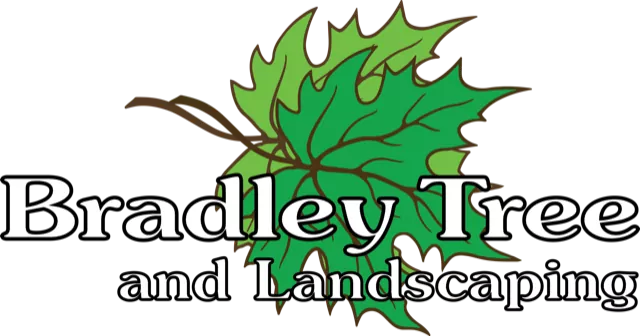Welcome back to the Bradley Trees blog, where we go to great heights to please you! With the snap freeze affecting our neighborhood recently, we figured now would be the best time to touch on this topic. Obviously, winter can be a rough time on us, but also our trees and especially their roots.
Understanding what happens to tree roots in wintertime is helpful to protecting your trees year-round!
How Do Tree Roots Prepare for Winter?
When winter arrives, tree roots become relatively dormant, slowing down activity. They don’t fully go to sleep, but it is limited. Growth slows in the winter to a pretty significant degree, but some roots do continue growing. The soil provides a tree’s root system some insulation from the harshest weather, but in the coldest temperatures (falling below 15°) tree roots can freeze through, disrupting root cells and interfering with water and nutrient uptake. This can make it more difficult for trees to thrive come springtime.

Signs That Tree Roots Might Be Damaged
Look for These Symptoms in Late Winter or Spring
It’s not always immediately obvious when tree roots have been damaged by freezing. However, certain signs may appear as the weather warms, including:
- Yellowing or browning leaves.
- Leaves take longer to appear during the growing season.
- Canopy is sparsely covered compared to previous years.
- Bark cracking or peeling near the base of the tree.
- Stunted growth from fewer nutrients.
- Brittle, drooping branches that break more easily than usual.
Can a Tree Survive Frozen Roots?
The good news is that most trees native to Buffalo and WNY have evolved to handle cold winters. Many trees enter a state of dormancy, which slows their metabolic processes and helps them conserve energy. However, extreme or prolonged freezing can still weaken roots, leaving the tree more susceptible to disease, pests, and poor growth in the spring.
Recovering from Frozen Roots
Minor root damage is not a total impediment to the life of the tree. A tree with a damage root system might need more watering come spring time, as well as some additional nutrients and pruning to help bolster recovery. The prognosis for your tree will vary based on age, species, extent of the damage, and other factors. In particular, younger trees might have a more difficult time bouncing back as their system hasn’t been fully developed and established.
When to Call an ISA-Certified Arborist
If you notice any of these symptoms, it’s best to consult an ISA-certified arborist in Buffalo or WNY. A professional can assess the extent of the damage and recommend appropriate treatments to restore your tree’s health.

Preventing Damage: What Buffalo Homeowners Can Do Now
Regular Tree Inspections
Fall is the perfect time to schedule a professional tree inspection. An arborist can identify vulnerabilities, such as exposed roots or signs of disease, and recommend proactive measures to minimize winter damage.
Utilize Windbreaks
In exposed spots, using windbreaks can offer some shielding to soil and roots from frigid winter winds. This can help manage the freezing risk.
Emergency Measures for Sudden Frost
In the event of unexpected frost, wrapping the base of young or vulnerable trees with burlap or protective fabric can provide an added layer of insulation.
Reach Out to Bradley Tree and Landscaping!
Tree roots can freeze under the right conditions, but with proper preparation, the risks can be minimized.
Don’t forget to stay up to date with your favorite Buffalo arborists by following us on our blog and on Facebook, Instagram, and YouTube! Reach out today by phone or using our online contact form. Are your trees ready to face the cold? If not, now is the perfect time to take action. Schedule a consultation with a local arborist and give your trees the care they deserve—because healthy roots mean healthy trees.

